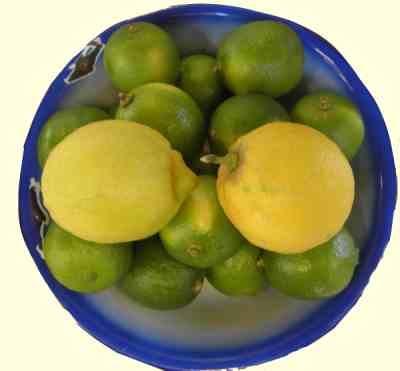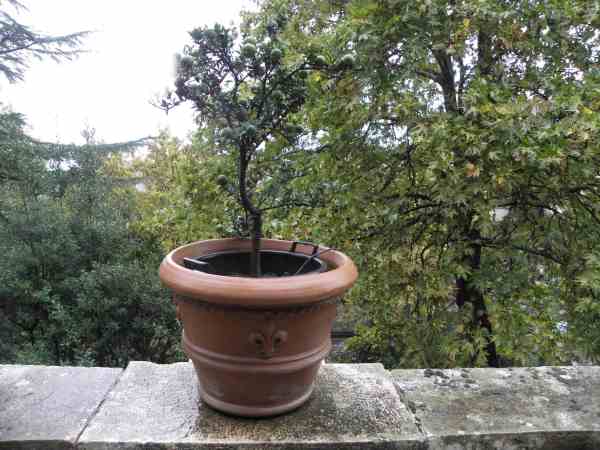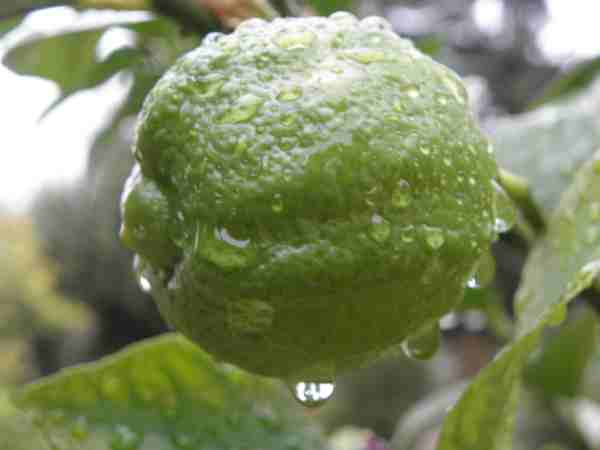Citron
The citron is an acidic tasting fruit with a
thick skin. It has the unique ability to flower
up to three times a year.
This small tree will become 5 meter high.
The unripe fruits are green, the ripe ones
are yellow or orange-yellow. They can become
large , as they fall not from the branch wenn ripe.
They can weight some kilograms but will be
destroyed by fungal infections .
Citron, acidity and sweetness
There is much difference in the aspect and
taste of the citron in different parts of the world.
Italian citron's , like the 'diamante' and greece
lemons taste acidic or very acidic, but the citrops
of Nort Africa are sweet.
The use of citron
In the arab speeking countries citron is used
as a replacement for vinegar, remember that the
citron that rows there is much sweeter then the
citron from around the Mediterranean sea.
The citron is used in meat dishes in Pakistan and Iran.
In the western kitchen it is used in sea dishes and
in jam and marmelade.

Citron and lime.
Citron, lemon and lime
Citron or citrus medicus is acid and is yellow.
Lemon is hybrid between Citron Citrus medica
and Lime Citrus aurantifolia.
Lime or citrus aurantifolia is green and sweet,
and contain cedro oil, used in drinks and perfumes.
|

The citron is an excellent pot plant. But it
needs protection against frosty weather.

Almost ripe citron on a rainy day. The citron
shrub is a thorny evergreen shrub with a thick
and sometimes wharty rind.

| |